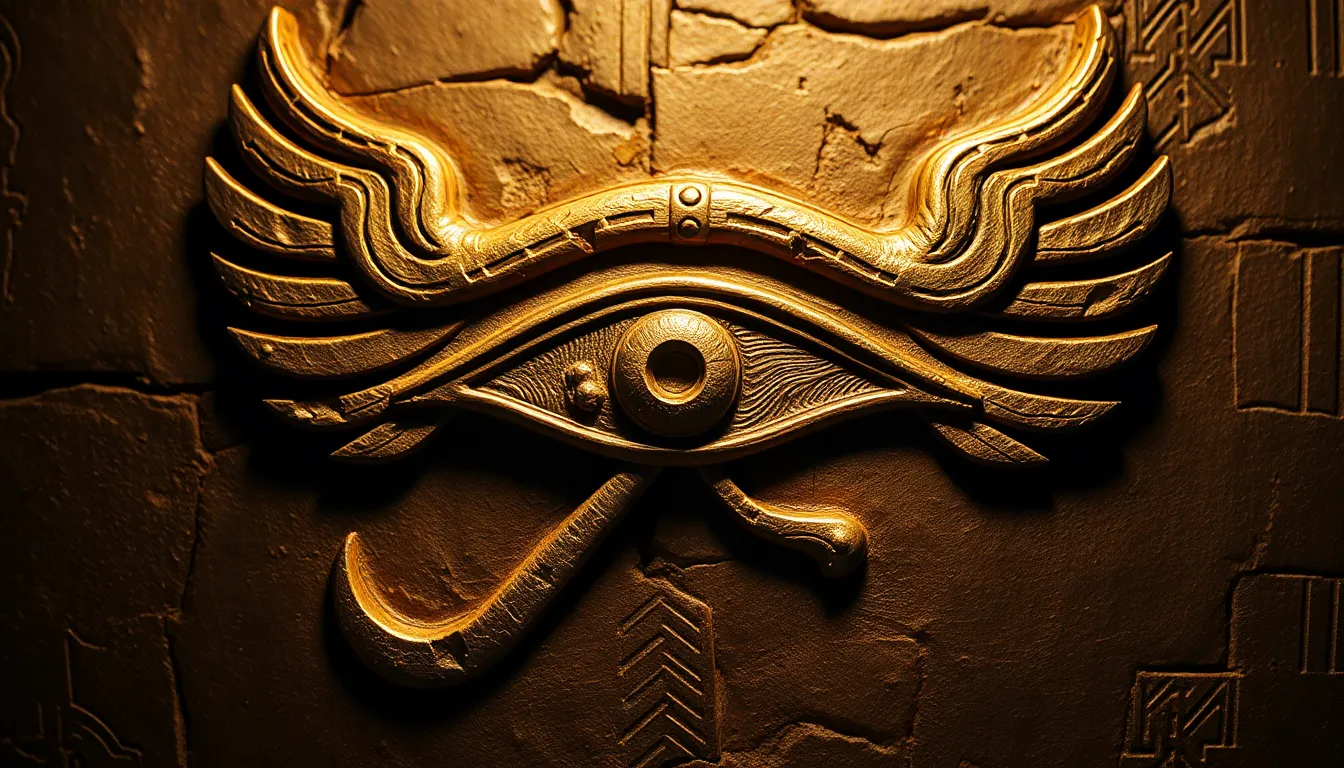The Significance of the Eye of Horus in Rituals
I. Introduction
The Eye of Horus, also known as the “Wadjet,” is one of the most recognizable symbols from ancient Egyptian mythology. This emblem, characterized by its unique design resembling a human eye with distinctive markings, holds profound meanings and significance in ancient Egyptian culture. It is often associated with protection, royal power, and good health. In this article, we will delve into the historical background, symbolism, and roles of the Eye of Horus in various rituals of ancient Egypt, as well as its enduring legacy in modern interpretations.
II. Historical Background of the Eye of Horus
The origins of the Eye of Horus can be traced back to ancient Egyptian mythology. According to the myth, Horus, the sky god, lost his left eye during a battle with Seth, the god of chaos and disorder. After this battle, the eye was restored by Thoth, the god of wisdom, symbolizing healing and restoration.
- Association with the god Horus: The Eye of Horus is intrinsically tied to Horus, often depicted as a falcon. This connection highlights themes of kingship and divine protection.
- Evolution of the symbol: Over time, the Eye of Horus evolved from a simple emblem of protection to a complex symbol embodying various aspects of life and death.
III. Symbolism of the Eye of Horus
The Eye of Horus embodies several layers of meaning within ancient Egyptian society.
- Representation of protection and healing: The Eye was believed to offer protection to the wearer, warding off evil spirits and misfortune. It was often placed on tombs and used in amulets to ensure safety in the afterlife.
- Connection to the concepts of order and chaos: The Eye symbolizes the balance between order and chaos, reflecting the duality of existence in ancient Egyptian belief systems.
- Its role as a symbol of resurrection: The restoration of Horus’s eye represents the ability to heal and be reborn, making it a powerful symbol for the afterlife.
IV. The Eye of Horus in Ancient Egyptian Rituals
The Eye of Horus played a significant role in various ancient Egyptian rituals, reflecting its deep-rooted importance in religious practices.
- Use in funerary practices: The Eye of Horus was often included in burial items, ensuring safe passage to the afterlife. It was believed to protect the deceased from harm and grant them a safe journey.
- Significance in temple rituals and offerings: Priests would invoke the Eye of Horus during temple ceremonies, seeking blessings and protection for the community and the pharaoh.
- Role in protective amulets and talismans: The Eye was frequently crafted into amulets worn by individuals, believed to provide ongoing protection and healing throughout life.
V. The Eye of Horus in Art and Iconography
The Eye of Horus is a prominent feature in ancient Egyptian art and architecture, reflecting its cultural significance.
- Depictions in ancient Egyptian art: The Eye appears in various forms of art, from tomb paintings to sculptures, symbolizing protection and divine oversight.
- Its influence on architecture and monuments: The Eye of Horus was often inscribed on temples and monuments, signifying the divine protection of the gods over the structures.
- Integration into everyday objects and artifacts: The symbol was also commonly found on jewelry, pottery, and household items, emphasizing its importance in daily life.
VI. Modern Interpretations and Adaptations
In contemporary society, the Eye of Horus continues to resonate with individuals and cultures around the world.
- The Eye of Horus in contemporary spirituality: Many modern spiritual practices incorporate the Eye as a symbol of protection and intuition, reflecting its ancient meanings.
- Use in popular culture and fashion: The Eye of Horus has found its way into fashion, tattoos, and art, appealing to those interested in ancient symbolism.
- Reinterpretation in various modern religions: Some modern religious movements have adopted the Eye of Horus, reinterpreting its meanings to fit contemporary beliefs.
VII. The Eye of Horus in Comparative Religion
The Eye of Horus shares similarities with protective symbols in other cultures, highlighting a universal theme of safeguarding and vigilance.
- Similar symbols in other cultures: The concept of a protective eye is prevalent in various cultures, such as the “Evil Eye” in Mediterranean cultures and the “Nazar” in Turkey.
- Cross-cultural significance of protective eyes: These symbols often serve similar purposes, providing protection against malevolent forces and bringing good fortune.
- Comparative analysis with related deities and symbols: The Eye of Horus can be compared to other deities associated with vision and protection, such as the Greek goddess Athena, who is often depicted with an owl, symbolizing wisdom and vigilance.
VIII. Conclusion
The Eye of Horus remains one of the most significant symbols in ancient Egyptian rituals and culture. Its associations with protection, healing, and resurrection highlight the depth of its meaning in the lives of ancient Egyptians. The lasting impact of the Eye of Horus can be seen in modern spirituality, art, and culture, illustrating its continued relevance and adaptability. As we explore the Eye of Horus, we gain insight into the rich tapestry of ancient Egyptian mythology and its enduring influence on contemporary life.




